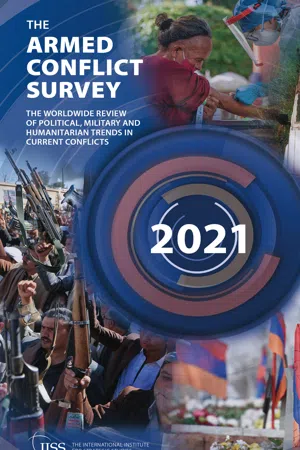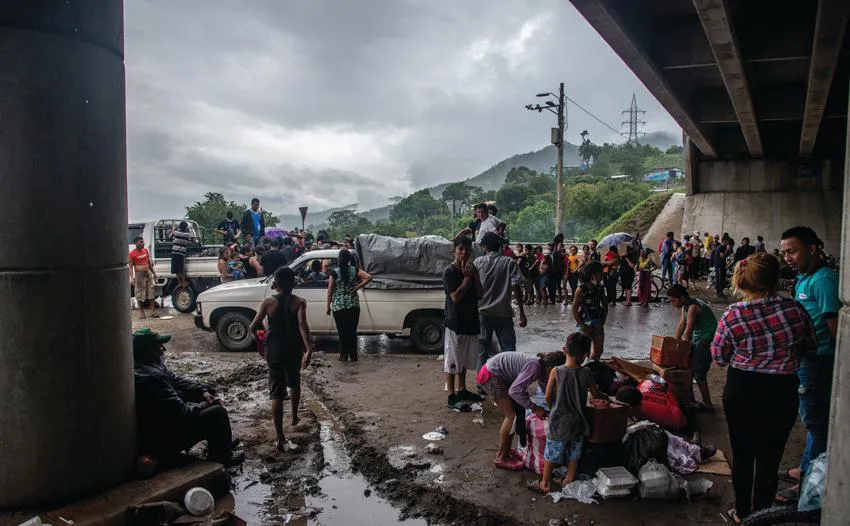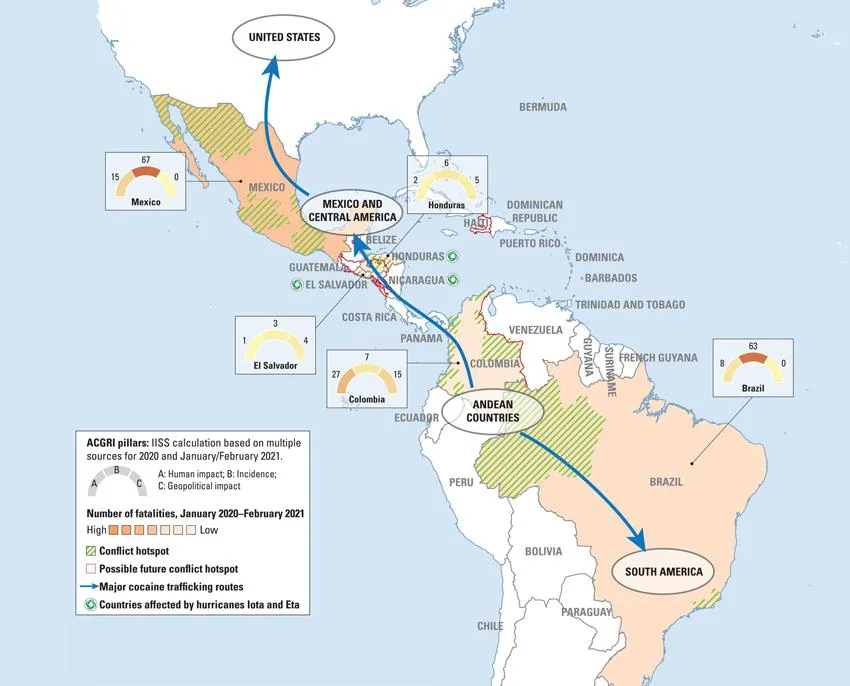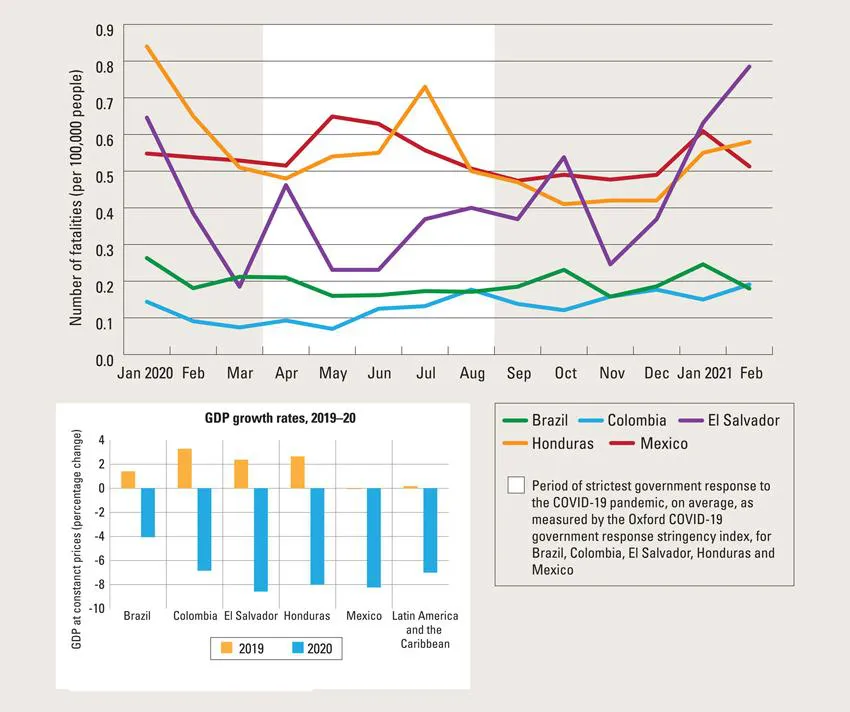
- 365 pages
- English
- ePUB (mobile friendly)
- Available on iOS & Android
Armed Conflict Survey 2021
About This Book
The Armed Conflict Survey is the annual review of the political, military and humanitarian dimensions of all active conflicts from the International Institute for Strategic Studies. It offers in-depth analysis of the drivers, dynamics and outlook of 34 current armed conflicts along with detailed information on conflict parties and more than 60 full-colour maps and infographics. The Armed Conflict Survey is an essential resource for those involved in security, foreign and humanitarian policymaking, and an indispensable handbook for anyone conducting serious analysis of armed conflict.
Key features
· Essays on global trends in armed conflict, with a focus on the changing nature of third-party intervention, the long aftermath of armed conflicts, and economic migration and forced displacement in a COVID-19 world.
· Overviews of key events and political and military developments from January 2020–February 2021 for each conflict.
· Strategic analysis of national and regional drivers and conflict outlooks.
· Regional analyses with unique insights into the geopolitical and geo-economic threads linking conflicts across regions and globally.
· Expanded information on conflict parties.
· The Armed Conflict Global Relevance Indicator (ACGRI), an IISS proprietary indicator that combines measures of incidence and human impact with geopolitical impact to assess the global salience of armed conflicts.
· Analysis of the humanitarian, social and economic impact of conflicts.
· Conflict-specific trends, strategic implications and prospects for peace.
· More than 60 full-colour maps, tables and infographics highlighting key conflict developments and data.
· Key statistics on violent events, fatalities, military power, geopolitical salience, refugees and internally displaced persons.
· The 2021 Chart of Armed Conflict, presenting information on conflict start dates, typologies and relevant refugee flows, as well as providing a visual overview of each conflict's geopolitical relevance, looking at 2020 UN Security Council resolutions, multilateral missions and the involvement of third-party countries.
Frequently asked questions
Information
CONFLICT REPORTS

1 Americas

Overview

Regional Trends
Continued violence

Sources: Armed Conflict Location & Event Data Project (ACLED), www.acleddata.com; Thomas Hale et al., ‘A Global Panel Database of Pandemic Policies (Oxford COVID-19 Government Response Tracker)’, Nature Human Behaviour, vol. 5, no. 4, April 2021, pp. 529–38
Economic and social upheaval
State inefficiency and growing politicisation of criminal groups
Regional Drivers
Political and institutional
State fragility:
Economic and social
Socio-economic divides:
Drug-trafficking routes and territorial control:
Table of contents
- Cover
- Title Page
- Copyright Page
- Table of Contents
- Editor’s Introduction
- Notes on Methodology
- Global Trends
- Conflict Reports
- Data Appendix
- Index